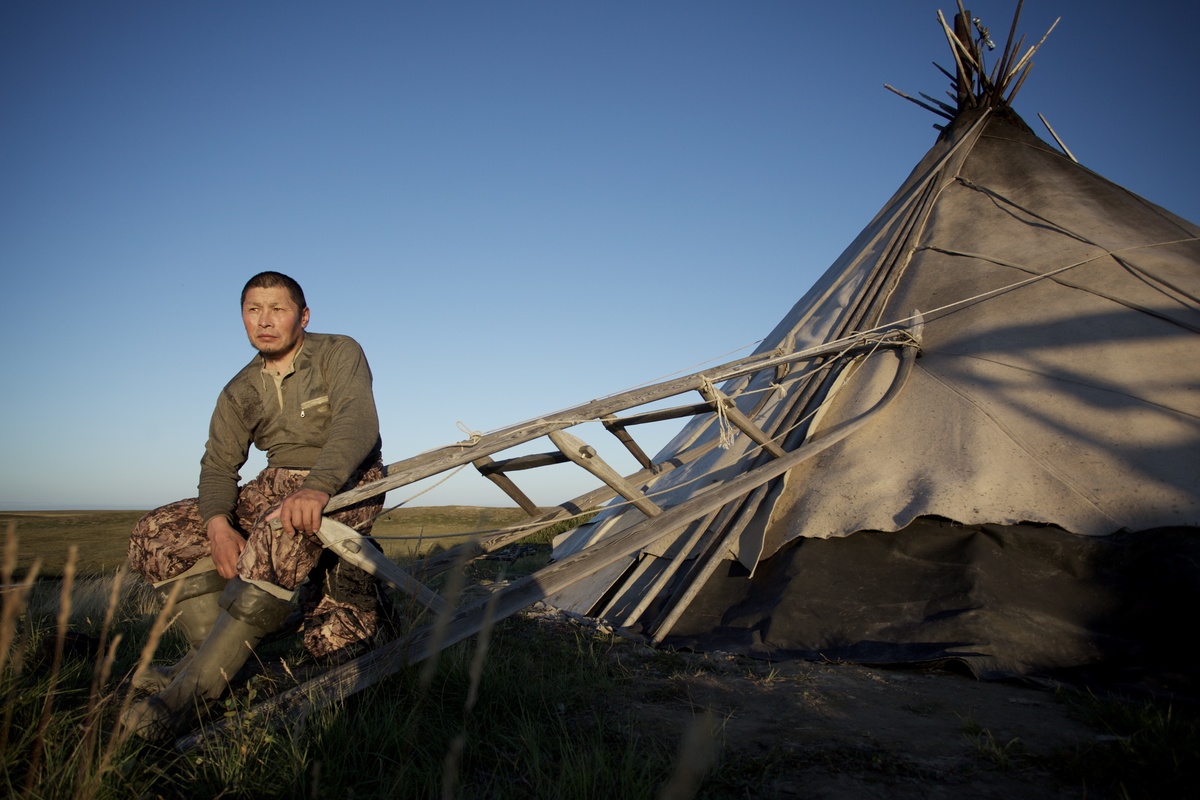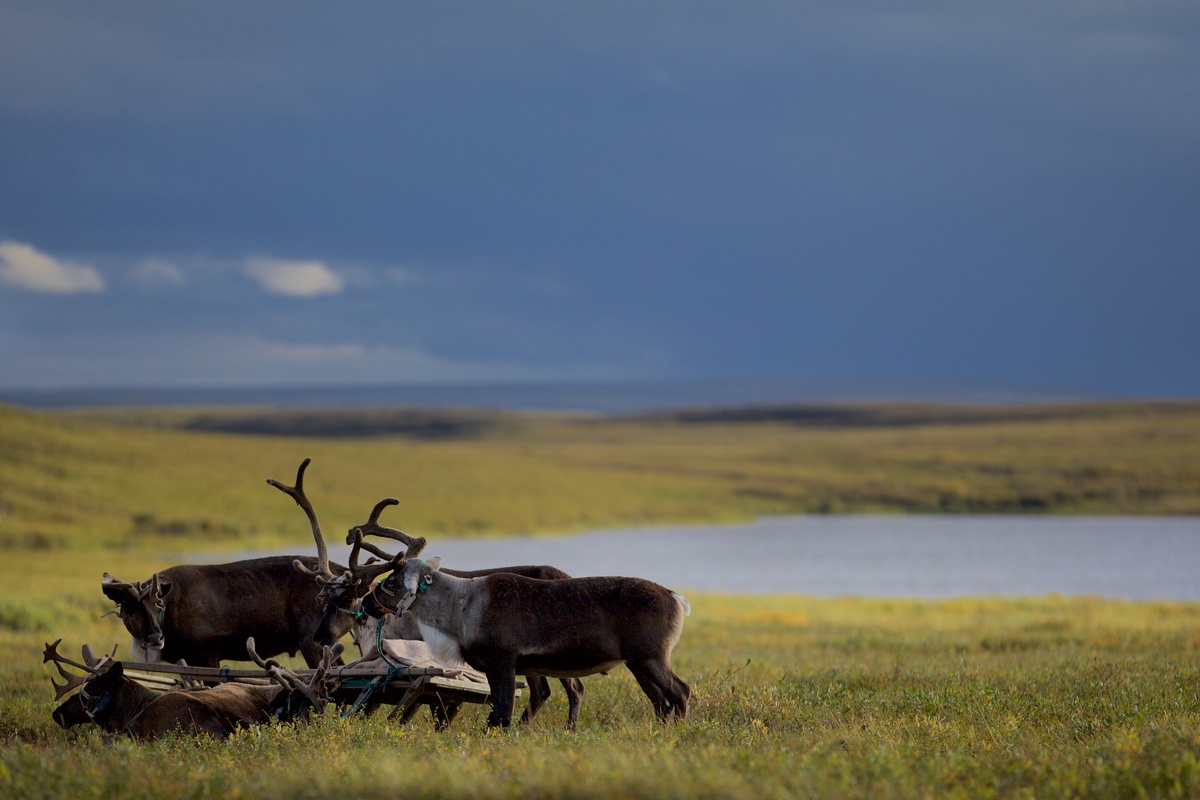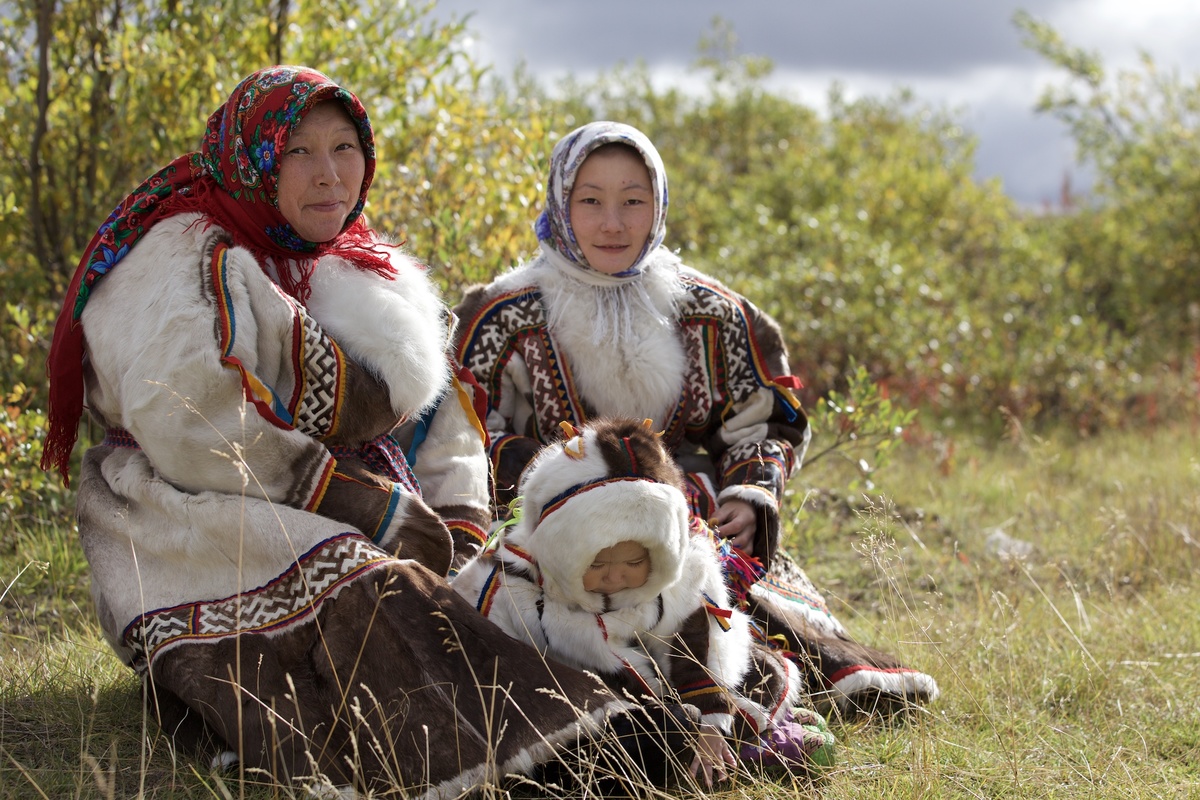“You feed a reindeer and step away – and it suddenly drops dead. Within a day it swells up like a ball ready to burst. We thought the heat was to blame, as they were still in their thick winter coats. A neighbour lost 50 of them.”

Indigenous Nenet man in Yamal Peninsula, Russia. © Greenpeace / Tatiana Vasilieva
Alexey Nenyanga is an Indigenous Nenets man from the Yamal Peninsula in Northern Russia. He lost most of his reindeer during the sudden outbreak of anthrax in the region this summer.
“People were evacuated, dogs put to sleep, chums (traditional Nenets tents) and sledges and everything were set on fire. Nothing was left. Then, calm ensued: they built new chums for us and we hoped that there might be some form of compensation. The state is lending a hand at the moment, but what the future holds, I don’t know.”
Soon after the tragedy, climatologists concluded that the anthrax outbreak was caused by an unusually hot summer. The ancient permafrost, which had been harboring dangerous bacteria for almost a century, began to melt. The authorities of the Yamalo-Nenets region, usually sceptical about climate change arguments, agreed with this analysis surprisingly quickly. It soon became clear that it presented a convenient way to distract attention from the other cause of the epidemic: in 2007, local authorities had hastily canceled the program of annual anthrax vaccinations for reindeer, for no apparent reason.

Reindeer in the Yamal Peninsula. © Stephen Nugent / Greenpeace
Climate change and the lack of vaccination by the authorities cost the life of a 12-year-old boy who died as a result of the outbreak. Almost 400 people were evacuated and more than 100 hospitalised. A further 25 were positively diagnosed and treated with antibiotics. Unfortunately, the same cannot be said for the 2000 plus reindeer that died across the anthrax-infested tundra.
“In our world, if a herder is left without reindeer, he has nothing else. Nothing.”
Climate change has already taken it’s toll on this region. Two years ago, on the Yamal Peninsula, there were even worse reindeer losses, owing, once again, to extreme weather conditions. First, came a heavy snowfall followed by hot weather and then – all of a sudden – freezing conditions again. As a result, the top layer of the tundra turned from snow to ice. Fifty-eight thousand reindeer died of starvation that year – they struggled to get food from under the ice, even damaging their hooves in their desperate attempts to find something to eat.
The story of one reindeer herder in particular has already spread across the tundra. Two years ago, he lost 300 reindeer when the tundra iced-up. For the next two years, he gathered his remaining 100 animals and migrated to the Yarroto lake – the epicentre of the recent Anthrax outbreak. This year, tragedy struck again. Now he is left with nothing but a single reindeer.

Nenets Indigenous family in Yamal Peninsula. © Stephen Nugent / Greenpeace
The effects of climate change are painfully evident in the Yamal Peninsula and the tundra, where, on the ancient permafrost, reindeers graze and the Indigenous communities live as they have done for hundreds of years. The people here will soon find it impossible to survive, let alone adapt to their ever-changing habitat. The top of the planet is in great peril, and if this trend continues, it won’t be just about reindeer anymore.
The following video contains first-hand accounts by the people affected, please watch and share.
Tatiana Vasilieva is head of the pressdesk at Greenpeace Russia.
